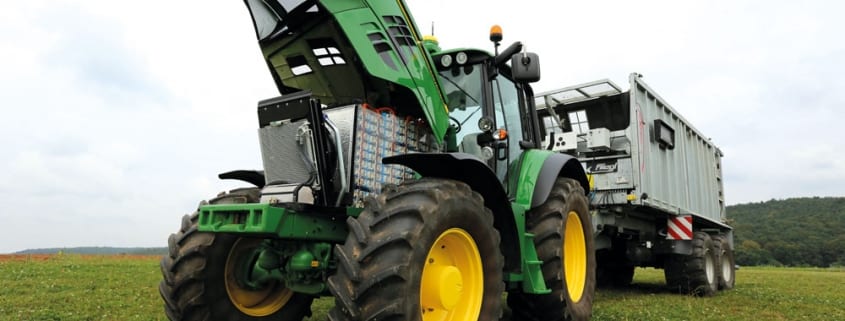Electric Farming Equipment is an Energy Trend to Watch
Our nation’s farmers have worked for generations in fields across the country. They have seen first-hand how farming equipment has improved over the decades to increase efficiency and to feed an ever-growing population.
A major new change for farming equipment is the trend of switching fossil fuel-powered farming equipment towards electric farming equipment. This trend builds on the idea of beneficial electrification, where switching to an electric end-use technology satisfies at least one of the following conditions with adversely affecting the others: saving consumers money over time, benefiting the environment, improving product quality or consumer quality of life, and fostering a more robust and resilient grid.
Historically, the most common form of electrification for farms has been electric irrigation pumping systems. Irrigation systems are crucial for many farmers and can make or break the crop yield for the entire year. Water heaters are the second most-used forms of electric technology on farms. They can be used for many different purposes, like in dairy farm processing, sterilizing equipment and general cleaning. Choosing an electric water heater for the right application depends on efficiency, size, recovery speed and peak temperature.
There are many benefits of replacing diesel motors with electric motors. Highly efficient electric motors can operate at 90% efficiency, which helps to provide cost savings over time, compared to inefficient diesel motors that only operate at 30% to 40% efficiency. Farmers can simply plug in the electric equipment without needing to refill a diesel tank. One of the greatest benefits of electric motors is they do not emit fumes like diesel motors, which means farmers get to breathe in cleaner air around them. Overall, electric motors are cleaner, quieter and easier to maintain. Some farmers are making the switch to electric tractors as companies like John Deere, AgCo and other companies continue to perfect their own electric models. While electric tractors are more efficient, quieter and better for the environment than conventional diesel tractors, they lack the battery power that many farmers need for a long day of working in the fields.
But the largest barrier of converting to electric technologies is the cost. Both the price of the electric technology itself and for the wiring to connect it to the entire farm can be extremely costly. Even with savings on fuel costs over time, farmers will be reluctant to replace their farming equipment because of high initial costs. However, there are federal and local government programs that can help to lessen the upfront costs for farmers. Electric cooperatives can also help farmers in their local territory with energy audits to identify energy efficiency opportunities, or with applying for funding from federal programs such as the Rural Energy Savings Program (RESP) or the Rural Business Development Grants (RBDG).
Besides electric irrigation systems and water heaters, the availability of other electric farming technologies is much less common, such as grain dryers, thermal electric storage systems and heat pumps. Many of these electric technologies are still in the early stages of commercialization and have not fully entered the agricultural market. The accessibility of these other technologies will depend on a variety of factors, like the type of farm, electricity prices versus fossil fuel prices, and any incentives to decrease upfront costs for buying new equipment. Despite these challenges, there are opportunities for expansion, especially for electric tractors and other electric farm vehicles which are used on many different types of farms. With more time and investment, electric farming equipment will likely become more widespread in the coming years.
Maria Kanevsky is a program analyst for the National Rural Electric Cooperative Association, the national trade association representing more than 900 local electric cooperatives. From growing suburbs to remote farming communities, electric co-ops serve as engines of economic development for 42 million Americans across 56 percent of the nation’s landscape.





Leave a Reply
Want to join the discussion?Feel free to contribute!